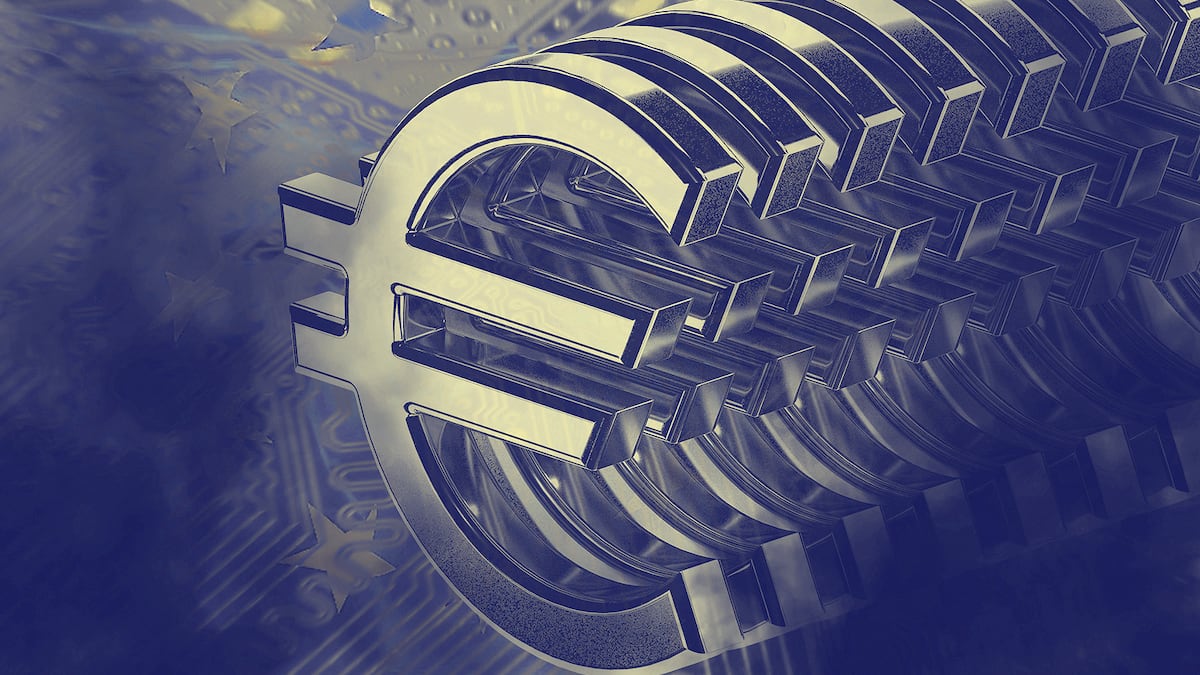- Noelle Acheson says Societe Generale's new euro stablecoin is a huge thing for crypto.
- However, the comment comes as dollar stablecoins continue to dominate the market.
- So we caught up with the Crypto is Macro Now writer to find out what the excitement was about.
A version of this story appeared in our The Guidance newsletter. Sign up here.
Happy Monday! Joanna here.
Big financial firms are preparing to muscle into crypto — and they just got a boost from one of France’s largest banks.
“This is huge,” Noelle Acheson wrote in a recent X post.

She was referring to a Financial Times report that Societe Generale had debuted its euro-backed stablecoin Coinvertible on the Bitstamp exchange.
SocGen is not the first bank to launch a stablecoin, and Acheson admits there probably isn’t a lot of demand for one denominated in euros.
So why was Acheson — who was head of market insights at Genesis Trading, and now authors the Crypto is Macro Now newsletter — so excited about this news?
I rang her up to ask just that.
But before we get into it, let’s look at SocGen’s Coinvertible.
- Stablecoins are cryptocurrencies whose value is pegged to a specific asset, usually, as is the case with Circle’s USDC and Tether’s USDT, the US dollar.
- Institutional investors use stablecoins to exchange their fiat currency for crypto assets.
- SocGen announced in a low-key press release in April that its digital assets arm was launching Coinvertible, a stablecoin backed by euros held at the bank.
- SocGen said it was aimed at institutional clients, and designed to “bridge the gap between traditional capital markets and the digital assets ecosystem.”
Why is that exciting?
For people like Acheson, who see thrilling possibilities in the future of tokenised securities, Coinvertible represents an important piece of the puzzle that must be in place before the concept can really take off.
Tokenised securities are traditional financial assets like stocks or bonds, but represented digitally so they can be traded on blockchains.
Yet, even among its proponents, there’s still a consensus that there’s zero secondary market liquidity in tokenised securities, and regulators aren’t entirely sold on the idea either.
Still, Acheson said, it’s just a matter of time before tokenisation becomes reality.
The big question, then, is how will buyers pay for these securities. And that’s where SocGen’s stablecoin comes in.
Other banks already offer stablecoins. JPMorgan, for example, has JPMCoin, but it’s only available to the bank’s clients for payments done within the firm’s systems — though that may change soon.
Coinvertible, on the other hand, can be bought on Bitstamp, and used on any platform that will accept it, as long as that platform has gone through SocGen’s know-your-customer process — referring to the strict background checks it performs on clients.
And that is going to be useful for financial firms who need a way to buy tokenised securities, Acheson said.
“The idea is that SocGen will help their corporate clients issue tokenised securities, and at the same time, facilitate other clients buying these securities on the blockchain,” she said.
Nickey Gomez, senior partner at XReg Consulting, agrees.
“As a result of the Societe Generale [euro] stablecoin, we can expect more traditional players to enter the crypto market,” he said.
“Many have been exploring this for years, and the increased regulatory pressure on crypto organisations, alongside the failures of the last 18 months, pave the way for traditional players to enter.”
Gomez added that the Markets in Crypto-Assets regulation, which comes into force next year, will give traditional players like SocGen an edge in the EU stablecoin market.
MiCA’s rules governing stablecoin issuers kick in in June. Issuers must be registered as a bank or “e-money institution,” and “there is now little or no time for firms other than those already authorised to enter the market ahead of the upcoming legislation,” he said.
Reach out to me at joanna@dlnews.com.


